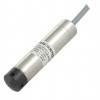When specifying the electrical connection for submersible types of the LMP, LMK and DCL series of liquid level sensors, you will need to choose from a selection of cable types.
The choice of cable will depend on your budget, application environment, and liquid compatibility.
Below is a summary of the properties of each cable to help make a better decision on the most appropriate cable for your application.
PVC
- Operating temperature from 0 … 70 °C
- Max. cable length 140 m
- Material is very flexible
- Good chemical resistance
PUR
- Operating temperature from -20 … 100 °C
- Max. cable length 700 m
- Abrasion-proof
- Resistant against chemicals
- May be used in food industry
FEP
- Operating temperature from -25 … 125 °C
- Max. cable length 700 m
- PUR cable + PTFE cover
- Resistant against all kinds of chemicals
TPE
- Large operating temperature from -25 … 125 °C
- Max. cable length 800 m
- Resistant against sea water and heavy oil
TPE-U
- Large operating temperature from -10 … 75 °C
- Drinking water approved
Help
FEP vs TPE for Diesel
Is a FEP or TPE outer cable material preferred for immersing in diesel? TPE seems to be a common choice for marine approved applications, but what’s the reason?
TPE is more robust, resistant to seawater and rated higher for hot environments.
FEP is better with diesel in non-marine applications, but TPE is also acceptable.
Related Help Guides
- How to reduce submersible pressure sensor failures caused by moisture ingress
- Using absolute pressure sensors to measure hydrostatic level
- Using a screw-in or waterproof pressure transmitter to measure liquid level
- Improve the electrical termination of vented submersible pressure sensors
- Considerations for monitoring Landfill Water Level
- Why are Submersible applications so demanding of Pressure Transducers?
- Determining the Signal Cable Length of a Suspended Liquid Level Transducer
- Are all IP68 Water Resistant Protection Ratings the same
- Problem with zero drift when installing submersible pressure sensor

